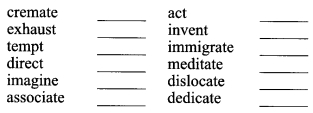EVENTS CONVENT HIGH SCHOOL
08/02/2022 CLASS- 6 SESSION 2021-22
SUBJECT : social science (history)
CHAPTER-10
new empires and kingdoms
______________________________________
I. MULTIPLE CHOICE QUESTIONS
Choose the correct option to complete the statements given below:
(i) The first ruler of the Gupta dynasty who adopted the grand title of maharaj- adhiraja was
(a) Samudragupta
(b) Chandragupta
(c) Skandhagupta
(d) Both (a) and (c).
(ii) We learn about Gupta rulers from the
(a) Inscriptions
(b) Prashastis
(c) Coins
(d) Both (a) and (c).
(iii) Harsha’s brother-in-law was the ruler of
(a) Kanauj
(b) Patliputra
(c) Ujjain
(d) Prayaga.
(iv) Pulakeshin II was a ruler of
(a) Chalukya dynasty
(b) Pallava dynasty
(c) Gupta dynasty
(d) Chola dynasty,
(v) We come to know about Harshavardhana from
(a) The biography was written by Banabhatta
(b) The account of Xuan Zang
(c) Both (a) and (b)
(d) Neither (a) nor (d).
Ans.
(i) – (b), (ii) – (d), (iii) – (a), (iv) – (a), (v) – (c).
II.FILL IN THE BLANKS
Fill in the blanks with appropriate words to complete each sentence.
- Kumara Devi, the mother of Samudragupta belonged to the …………………… gana.
- ……………., a Chinese pilgrim, spent a lot of time at Harsha’s court and left a detailed account of what he saw.
- Harshavardhana’s success was checked by ………………., a chalukya ruler.
- The two important ruling dynasties in south India during this period were the ………. and the ………..
- The Raichur Doab was situated between the rivers …………………. and ………….
Answer:
- Lichchhavi
- Xuan Zang
- Pulakeshin II
- Pallavas, Chalukyas
- Krishna, Tungabhadra
III.TRUE/FALSE
State whether these sentences are true (C) or false (F).
- The military leaders collected revenue from the land granted to them and spent this on their families.
- The rulers of dakshinapatha surrendered to Samudragupta after being defeated and were never allowed to rule again.
- The descendants of the Kushanas and Shakas ruled the outlying areas during this period.
- Harshavaradhana became the king of Thanesar after both his father and elder brother died.
- Harshavardhana never got success in the east.
Answer:
- False
- False
- True
- True
- True
IV.MATCHING SKILL
Match the items in column A correctly with those given in column B.
Column A Column B
(i) Kalidasa (a) The court poet of Pulakeshin II
(ii) Aryabhatta (b) The court poet of Samudragupta
(iii) Ravikirti (c) A renowned poet during this period
(iv) Harishena (d) The court poet of Harshavardhana
(v) Banabhatta (e) An astronomer
Ans. (i)—(c), (ii)—(e), (iii)—(a), (iv)—(b), (v)—(d).
V.VERY SHORT ANSWER TYPE QUESTIONS
1. Who was Samudragupta?
Ans: He was a famous ruler of the Gupta dynasty.
2. How do we know about him?
Ans: We know about him from a long inscription, which is a poem in Sanskrit composed by his court poet, Harishena.
3. Where is this poem inscribed?
Ans: This poem is inscribed on the Ashokan pillar at Allahabad.
4. What was prashastis?
Ans: Prashastis were poems composed by the court poets in praise of their rulers.
5. During which dynasty did prashastis gain importance?
Ans: Prashastis gained importance during the Gupta dynasty.
SHORT ANSWER TYPE QUESTIONS
1. Harishena held more than one office? Name them.
Ans: Harishena held more than one office. Besides being a maha-danda-nayaka, he was a Kumar-amatya and a sandhi-vigrahika.
2. What was the nagaram?
Ans: It was an organisation of merchants.
3. Who controlled the local assemblies?
Ans: Wealthy and powerful landowners and merchants controlled the local assemblies
4.How do we know about the lives of ordinary people during this period?
Ans: We come to know about the lives of ordinary people from plays like Kalidasa’s Abhijnana Shakuntalam and accounts left by Chinese pilgrims like Fa Xian.



